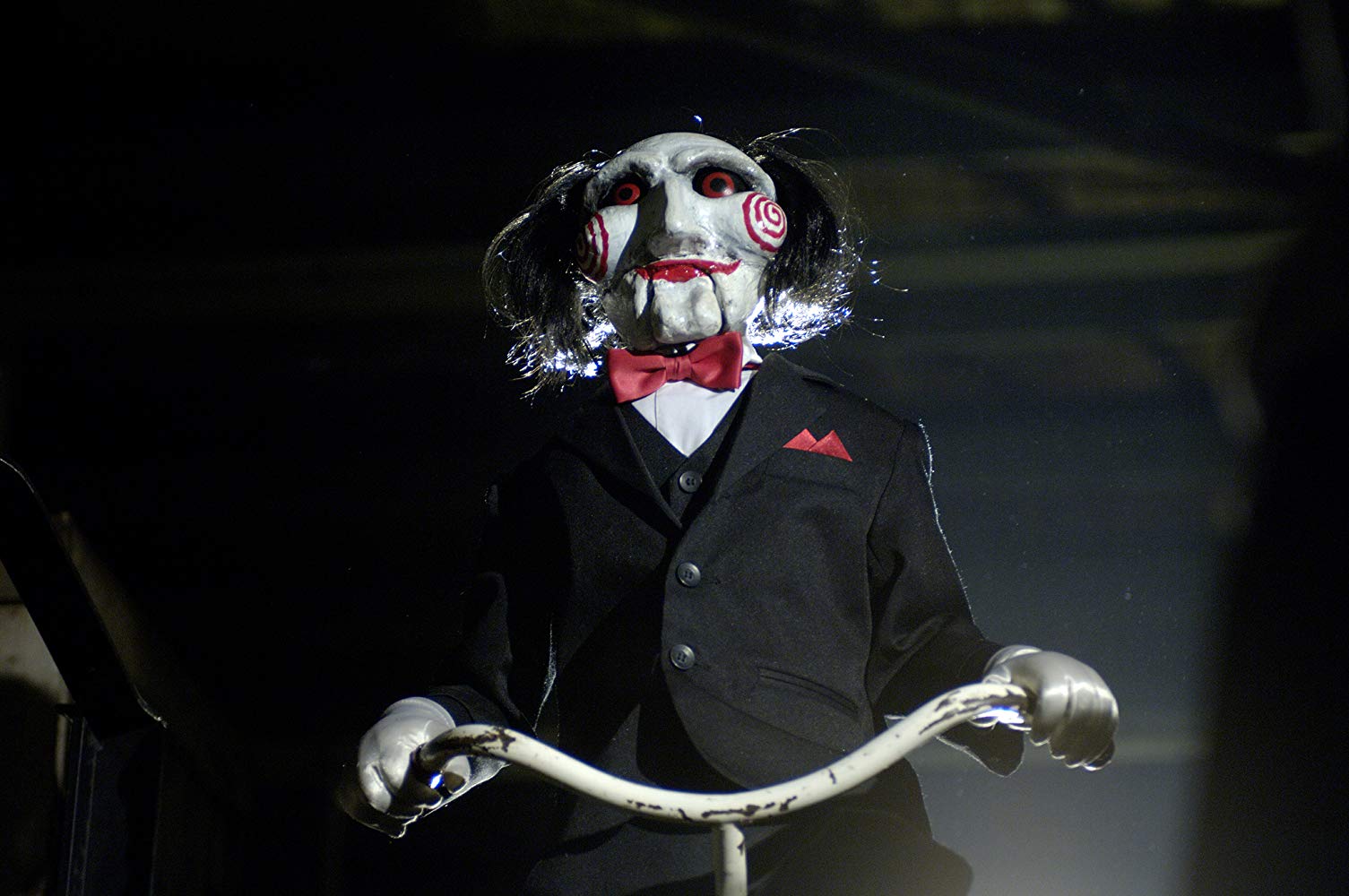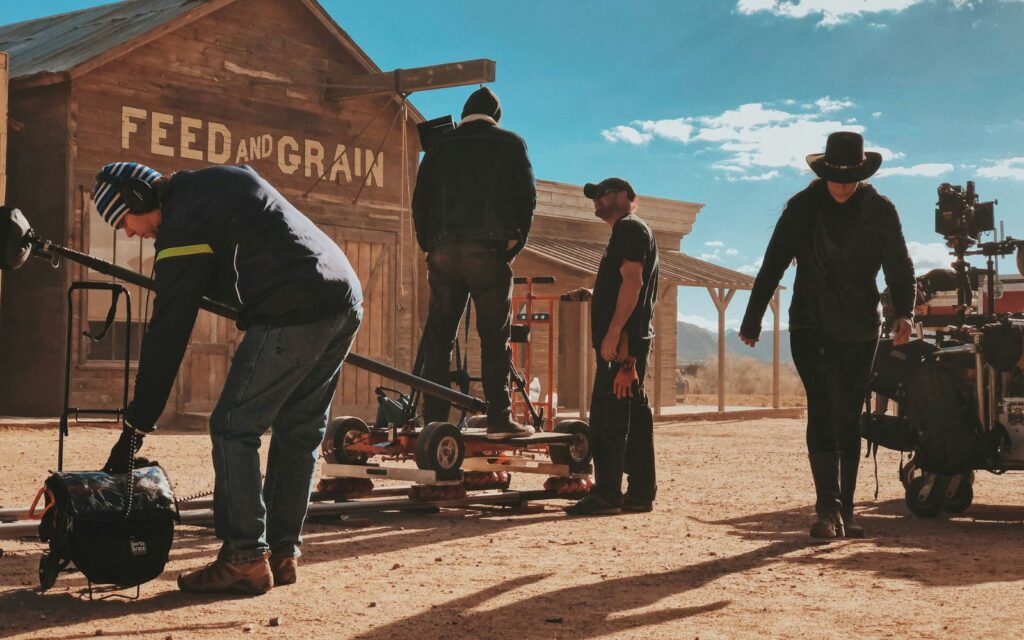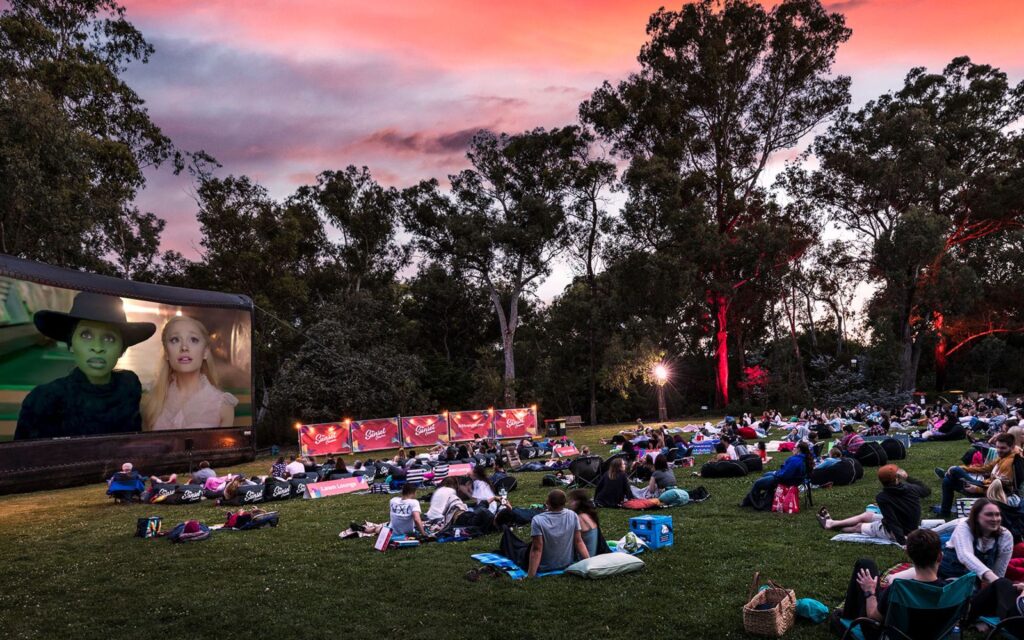I want to play a game.
Saw (2004) is one of the greatest horrors of the modern era. Written by Leigh Whannell and directed by James Wan, both Aussies, Saw flips the serial killer genre on its head with films about killer John Kramer, known as Jigsaw, who forces his victims to escape from inventive and dangerous traps in hopes of teaching them the value of life.
The heart-attack-inducing thriller made over $100 million at the box office, so a sequel was inevitable. Sixteen years and eight films later, the seemingly dead franchise is getting revived thanks to comedian Chris Rock.
Recruiting Saw II, III and IV director Darren Lynn Bousman, Rock will produce and star in a Saw spinoff entitled Spiral.
While I can’t say I’m totally on board, talk of a new Saw flick means there’s no better time to present to you the definitive ranking of the franchise from worst to best.
Jigsaw (2017)
Trying their best to milk a cash cow that dried up years ago, Lionsgate gave the green light for easily the worst film in the franchise with 2017’s Jigsaw. Set a decade after the death of notorious killer Jigsaw, this snooze-fest involves another set of players forced to endure violent traps in order to survive. There’s nothing new here and the convoluted plot, a common theme with the later films in the series, will only give you a migraine.
Saw: The Final Chapter (2010)
While it didn’t turn out to be the final chapter, this is the only Saw movie filmed in 3D, although not even that could save it from poor reviews. Focusing on Sean Patrick Flanery’s (oh, how the mighty have fallen) Bobby, a charlatan who pretends to have escaped one of Jigsaw’s traps, this distracting entry also features Jigsaw’s ex-wife Jill (Betsy Russell) trying to stop homicidal cop, Hoffman (Costas Mandylor), from continuing her late husband’s murderous work. It’s clumsy, confusing and just plain boring.
Saw III (2006)
A hit at the box office, Saw III was critically lambasted upon its release, and for good reason. Chock full of flashbacks and over the top gore, this is one for the torture porn enthusiasts as the traps really begin to get nasty. Lead Jeff Denlon (Angus Macfadyen) is so off-putting, you hope he doesn’t make it through Jigsaw’s challenges. All the while, the bond shown between Kramer (Tobin Bell) and Amanda (Shawnee Smith) only scratches the surface of the duo’s complicated father-daughter relationship. It’s a messy and ultra-violent film weighed down by too many flashbacks.
Saw VI (2009)
Having taken over the mantle of the Jigsaw Killer, Detective Hoffman must try to keep his identity hidden as he continues his homicidal rampage. This time, the victims are insurance executive William Easton (Peter Outerbridge) and his team, who are all rather unlikeable. Saw VI really stretches the Jigsaw legacy thin and is best summed up by Variety critic Rob Nelson who called Saw VI, “A film so frighteningly familiar it could well be called Saw It Already.”
Saw X (2023)
Returning to the franchise’s roots, Saw X shifts the focus back to Jigsaw himself, offering a prequel set between the events of Saw and Saw II. Fans enjoyed seeing Tobin Bell return to his iconic role, and the film introduces fresh traps while deepening Jigsaw’s motivations. Saw X is a fitting homage to the series’ original formula and a welcome addition for long-time fans, but ultimately, it wasn’t needed nor original nor particularly brave…so it’s hard to rate it any higher on this list.
Saw IV (2007)
The fourth film was where things started to go a little off the rails. Despite being dead, Jigsaw is still managing to torment people through a variety of hideous traps from beyond the grave, thanks to help from Detective Hoffman. SWAT Officer Daniel Rigg (Lyriq Bent) is put through a number of tests as he tries to save two missing detectives and more details about Jigsaw’s background and methods are revealed. Saw IV is filled with flashbacks and multiple timelines while upping the gore and featuring a cast of characters you’ll be happy to see meet their demise.
Saw V (2008)
This one is all over the shop, timeline-wise, existing before Kramer’s autopsy in III and IV but also before he’s caught in II. The critics didn’t rate it, but I think it’s one of the better films in the series. What it does well is return to the teamwork-based plot of Saw II, as a group must put their differences aside to escape Jigsaw’s terrifying traps. Throw in a subplot involving FBI agent Strahm (Scott Patterson) trying to unravel Hoffman’s involvement in it all and some of the best traps in the series and you have another watchable entry that’s more entertaining than previous efforts.
Saw II (2006)
While it doesn’t exactly match the thrill of the original, this sequel does enough to be a worthy follow-up. Caught by New Kids On The Block’s Donnie Wahlberg as Eric Matthews, Jigsaw has one last trick up his sleeve: a house with eight captured strangers, including Matthews’ son. A riff on the haunted house genre, the group must pass various grisly tortures to exit the house safely while Matthews is forced to face his own demons to save his son. This one elaborates more on Jigsaw’s reasoning and creates many of the rules and mythology seen in further releases. Crooked cops, the return of survivor Amanda Young and a used syringe pit trap all feature in this deserving follow-up.
Saw (2004)
A highly original horror with the right amount of terror and gore to keep modern audiences tuned in, the first Saw remains the best in the series. Whannell’s clever script, Wan’s expert direction and a terrific cast spearheaded by Carly Elwes, Danny Glover and Tobin Bell help turn what could have been a b-grade, direct-to-DVD release into a box office smash that’s now become part of the cultural zeitgeist. Not bad for a couple blokes from Down Under.
Never miss a story. Sign up to Beat’s newsletter and you’ll be served fresh music, arts, food and culture stories three times a week.






